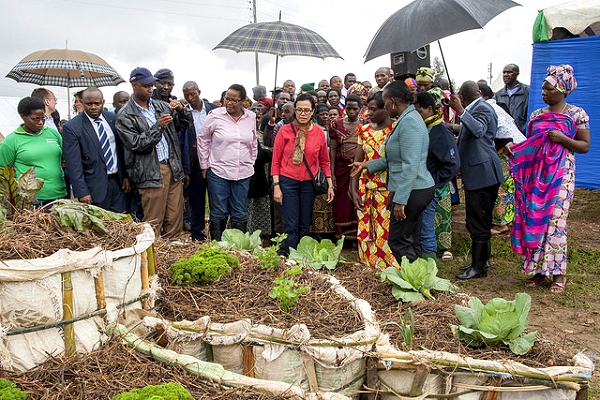
Global development partners launch climate anddisaster resilience initiative for Sub-Saharan Africa

(Joint press release issued yesterday by the World Bank, African Development Bank, and World Meteorological Organization from the 17th World Meteorological Congress in Geneva, where Climate Centre Director Maarten van Aalst moderated a high-level panel on hydromet services as part of the launch event for the Sub-Saharan resilience initiative.)
The World Meteorological Organization, African Development Bank and World Bank yesterday launched an initiative to support the modernization and strengthening of Sub-Saharan African meteorological and hydrological services.
These services are key to strengthening resilience to extreme weather events and enabling economic development.
Entitled “Strengthening Climate and Disaster Resilience in Sub-Saharan Africa”, this initiative is a direct response to the anticipated adverse impacts from climate change, including food insecurity, which pose severe risks to growth and development across the region.
“Reliable and real-time weather and climate information is a prerequisite for multiple sectors of the economy, including water, agriculture, transport, energy and public health,” said Makhtar Diop, the World Bank Vice President for the Africa Region.
“Increasing the accuracy of weather forecasts will save lives and livelihoods. We are committed to working together to improve these services in SubSaharan Africa.”
Weather stations
Most meteorological and hydrological service providers in Sub-Saharan Africa are unable to meet users’ current needs for weather and climate information.
Also, corresponding infrastructure is inadequate. A recent WMO survey showed that 54 per cent of the surface and 71 per cent of the upper-air weather stations in the region did not report data.
In addition, there is limited and often fragmented funding from development partners.
The need for a larger, sustainable system architecture inspired the WMO, African Development Bank, and World Bank Group to join forces.
“This is a timely and highly needed initiative. With the help of all our partners and member countries, we are committed to bring cutting-edge advancements and experience from around the globe to Sub-Saharan Africa,” said Michel Jarraud, Secretary General of the World Meteorological Organization (WMO).
“In addition, it builds on existing cooperation and is fully aligned with the Global Framework for Climate Services and the African Ministerial Conference on Meteorology – Integrated Strategy on Meteorology.”
Early warning
The initiative is based on several guiding principles such as improving the capacity of National Meteorological and Hydrological Services and their regional support centres to access global climate data and global models.
This includes improved early warning and forecasting to help prevent damage and loss of life from catastrophic events.
Partnerships and coordination among existing services would also be strengthened through information sharing among agencies and advising on improving legal and regulatory frameworks.
The initiative will facilitate coordination and leveraging of financing from various sources of development and climate finance.
The initial phase will focus on 15 countries and four regional centres. The initiative also addresses how the modernization and strengthening of hydro-meteorological services remains a high priority of the region.
‘Major boost’
As the premiere African development institution, the African Development Bank is happy to join forces with the World Bank Group and WMO in this transformative initiative,” said Aly Abou-Sabaa, Vice-President of the African Development Bank.
“If done right, this initiative will give a major boost to economic as well as human development indices in Sub-Saharan African, leading to economic growth and development.”
The expected results of the initiative include the widespread availability of timely and reliable forecasts at the regional, national and local levels, leading to a reduction in the impacts of weather and climate extremes on people and property.
Additional results include improved weather, climate and hydrological services delivered to citizens and weather-dependent sectors and improved international and cross-border collaboration on drought, severe weather and flood warnings.
The initiative was designed with the technical and financial support of the Global Facility for Disaster Reduction and Recovery.
World Bank Managing Director Sri and Chief Operating Officer, Mulyani Indrawati, visits an animal husbandry project Rambura, western Rwanda, located on a steep hillside. The project employs 150 people, more than half of them women. A new initiative involving the bank and other partners, Strengthening Climate and Disaster Resilience in Sub-Saharan Africa, is a response to anticipated climate impacts, including food insecurity. (Photo: Simone D. McCourtie/World Bank via Flickr)